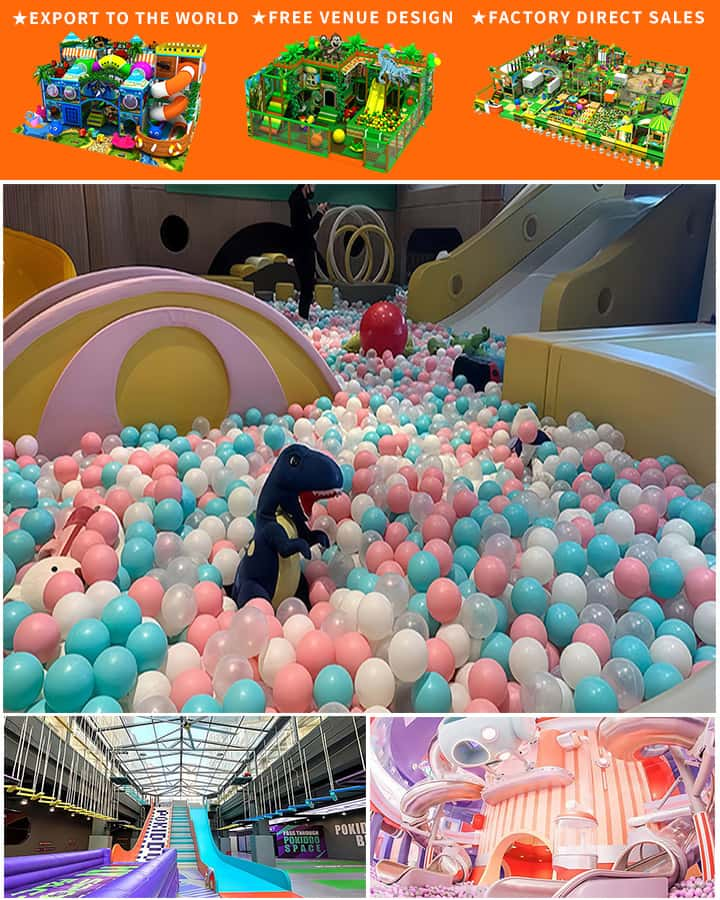In today’s fast-paced world, providing a safe and engaging environment for children is paramount. One of the best ways to ensure this is by investing in high-quality children’s indoor soft play equipment. These installations not only offer endless hours of fun but also promote physical activity, social interaction, and imaginative play. This guide will delve into the key considerations when selecting indoor soft play equipment, its benefits, and popular types available for your indoor playground.
Key Considerations for Selecting Indoor Soft Play Equipment
Safety First: Safety is the most crucial factor when choosing soft play equipment. Ensure that all items are designed with rounded edges, non-toxic materials, and meet international safety standards such as ASTM (American Society for Testing and Materials) or EN (European Norm). Additionally, look for equipment that is fire retardant and has passed durability tests.
Age Appropriateness: Different pieces of soft play equipment are designed for specific age groups. It’s important to choose equipment that suits the age range of the children who will be using it. This ensures that the activities are both safe and enjoyable. Manufacturers usually provide age recommendations on their products, which should always be followed.
Space Requirements: The size and layout of the indoor space where the equipment will be installed are significant factors. Measure the available area carefully and select equipment that fits within those dimensions without overcrowding. Adequate space ensures that children can move about freely and safely.
Modular Design: Opt for modular play systems that allow you to customize the layout and expand the setup if needed. This flexibility is particularly useful as children grow older and may require different types of play structures.
Durability and Maintenance:
 Invest in durable materials that can withstand heavy use and are easy to clean. High traffic areas like indoor playgrounds require low maintenance solutions to keep the equipment in good condition for years to come. Look for equipment made from commercial-grade foam, reinforced stitching, and waterproof materials.
Invest in durable materials that can withstand heavy use and are easy to clean. High traffic areas like indoor playgrounds require low maintenance solutions to keep the equipment in good condition for years to come. Look for equipment made from commercial-grade foam, reinforced stitching, and waterproof materials.Educational Value: Choose equipment that offers educational benefits along with fun. Climbing walls, sensory zones, and interactive panels can help develop motor skills, cognitive abilities, and creativity.
Benefits of Children’s Indoor Soft Play Equipment
Physical Development: Soft play equipment helps in developing motor skills, balance, coordination, and strength. Climbing, sliding, and jumping activities enhance gross motor skills while more delicate manipulation tasks improve fine motor skills.
Social Interaction: Indoor soft play areas provide a platform for children to interact with their peers, fostering social skills such as sharing, teamwork, and communication. Group play encourages cooperation and empathy.
Imaginative Play: Soft play sets often feature themed elements like castles, spaceships, and jungles that inspire creative thinking and role-playing. This type of imaginative play is crucial for cognitive development and emotional growth.
Safe Environment: Unlike outdoor playgrounds, indoor soft play areas offer a controlled, safer environment. The cushioned floors and soft surfaces reduce the risk of injury during play.
Popular Types of Indoor Soft Play Equipment
Climbing Walls and Slides: Ideal for developing motor skills and confidence, climbing walls and slides are a staple in any soft play setup. They come in various shapes, sizes, and themes to match the indoor decor.
Ball Pools: Filled with colorful plastic balls, ball pools are perfect for sensory stimulation and imaginative play. They often include interactive features like ball shooters or hidden treasure chests.
Trampolines and Spring Rides: For energetic kids, trampolines and spring rides offer a great way to burn off steam and improve balance and coordination. Ensure these are designed with safety features like padded edges and enclosure nets.
Interactive Panels: Educational and entertaining, interactive panels include elements like puzzles, shape sorters, and musical instruments. These panels are excellent for enhancing cognitive abilities and keeping children engaged.
Tunnels and Obstacle Courses: Tunnels and obstacle courses encourage physical activity and problem-solving skills. They can be combined in numerous ways to create dynamic play environments.
In conclusion, children’s indoor soft play equipment is an investment in their overall development and well-being. By considering safety, age appropriateness, space requirements, and durability, you can create an indoor playground that provides endless fun and learning opportunities. Whether it’s a home playroom or a commercial setting, the right soft play equipment can make a significant difference in children’s lives, offering them a safe space to explore, learn, and grow.




